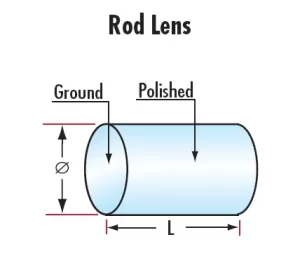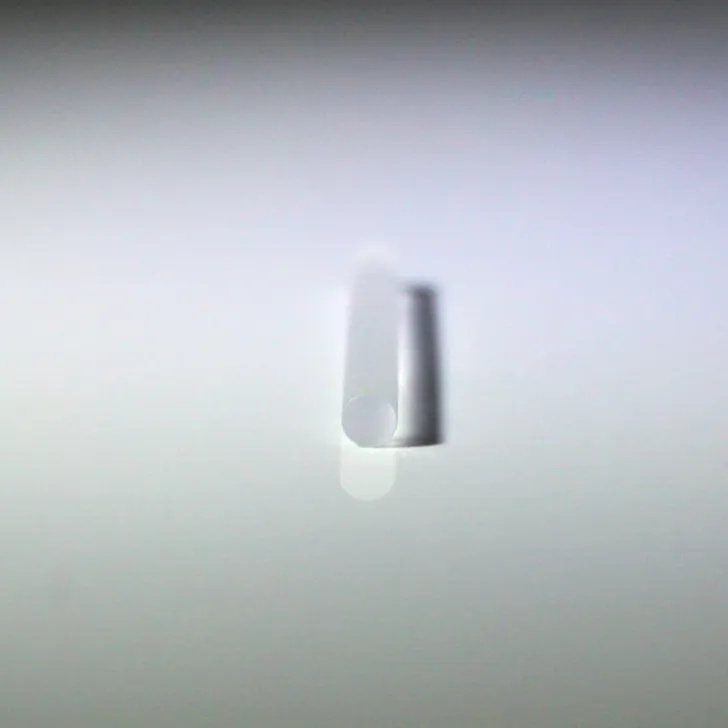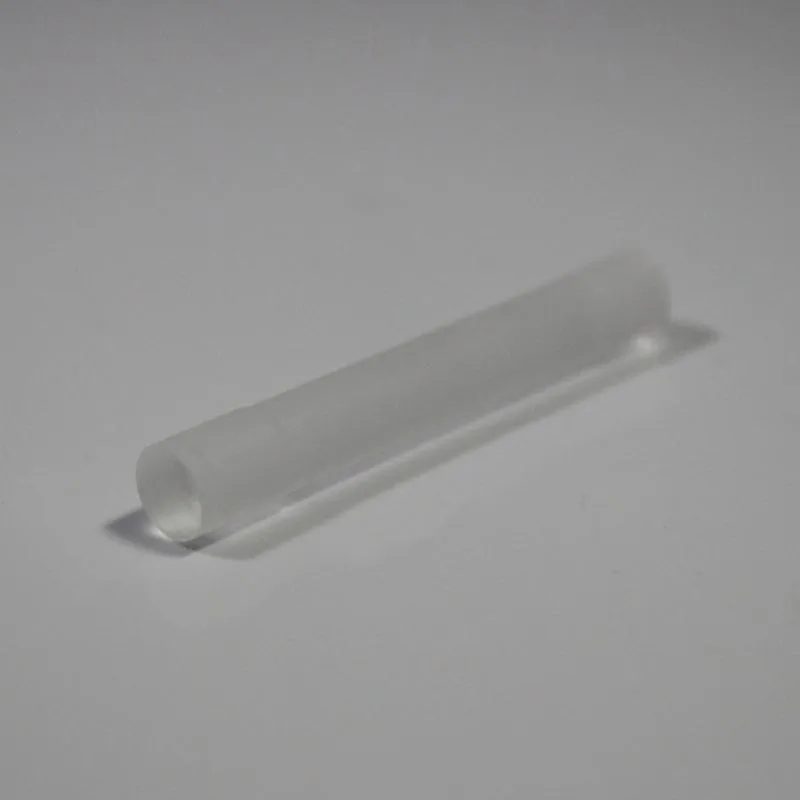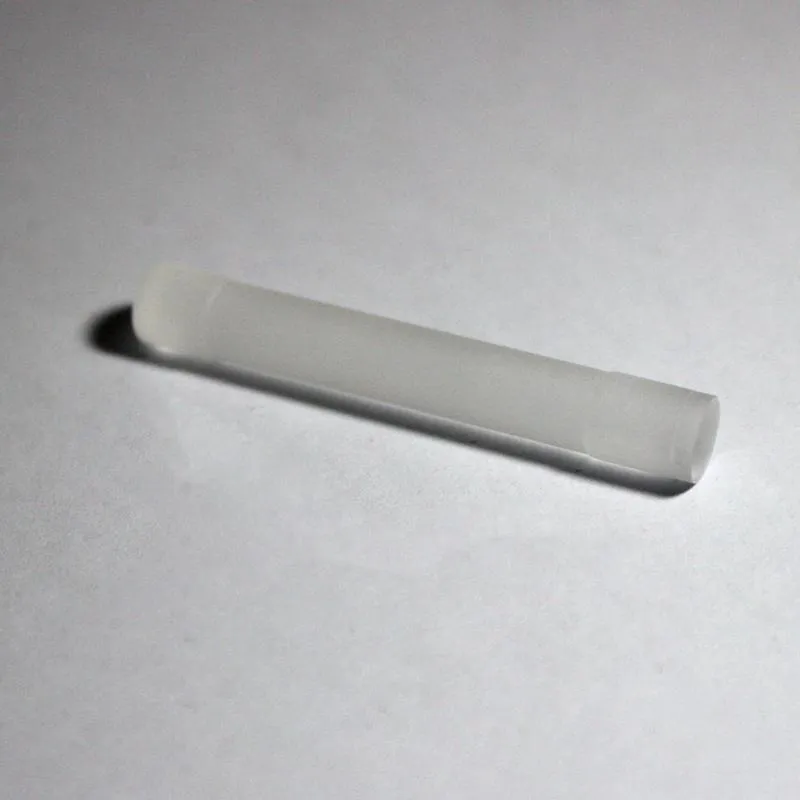Optical 19.4*2.2mm rod lens for endoscope
Dimension: 0.8mm-20mm
Surface Accuracy: lambda/10
Size Tolerance: +/-0/0.1mm
Angle Tolerance: +/- 1 degrees
Coating: Optional
Our company supply a range of Endoscope Rod Lens, endoscope lens for different brand of rigid endoscope, such as Wolf endoscope, Karl Storz etc., if you are unable to find a specific piece of Endoscope Lens, please contact us freely, with the item that you are looking for.
An endoscope is a commonly used medical device consisting of a beam guide structure and a set of lenses. It enters the body through a natural orifice or through a small incision and is imaged externally by the device for examination and surgical treatment of organs or tissues. The abdominal cavity, which is commonly used in clinical practice, not only extends the surgeon’s eyes, but also greatly increases its resolution and definition. The commonly used laparoscope in clinical practice belongs to the rigid endoscope, which refers to the equipment that uses a series of optical columnar lens to transmit the image to the eyepiece and connects to the independent camera for imaging.
Our company supply a range of Endoscope Rod Lens, endoscope lens for different brand of rigid endoscope, such as Wolf endoscope, Karl Storz etc., if you are unable to find a specific piece of Endoscope Lens, please contact us freely, with the item that you are looking for.
WHAT IS ROD LENSES?
A rod lens is a cylindrical lens which has the geometrical form of a cylinder and has a polished mantle, while the two flat end surfaces may be ground. It is analogous to a ball lens for focusing in both directions. They can be sued as cylindrical lenses for beam collimation, focusing and imaging.
TYPES OF ROD LENSES WE SUPPLY
Rod lenses are available with different optical materials, mostly with glasses like fused silica and BK7, but also with crystalline materials like YAG or silicon, e.g. for infrared optics. Rod lenses can have diameters of a few millimeters, but there are also cylindrical microlenses with substantially smaller diameters. Small-diameter rod lenses are frequently used as fast-axis collimators for diode bars.
THE REGULAR SPECIFCATIONS OF OUR ROD LENS IS AS FOLLOW:
| Dimension Range | 3-50mm |
| Diameter tolerance: | +0/-0.02mm |
| Thickness tolerance:+/- 0.02mm | +0/-0.02mm |
| Centration | <3 mins |
| Surface quality | 40/20 or better |
| Surface accuracy | 0.5-0.2 |
| Clear aperture | >90% |
| Chamfer | 0.1-0.25mm*45 degrees |
| Coat | as requested |
| Material | Float glass,K9 ,FS,SapphireSF11,CaF2,MgF2 or other optical glass |

APPLICATIONS OF ROD LENSES
- Cylinder Lens
When illuminated from the side, rod lenses can be used for the same applications as plano-convex cylinder lenses. Previous examples include line generation, astigmatic collimation, and anamorphic beam shaping. Rod lenses are especially effective as line generators because the double-convex shape has more optical power than a plano-convex shape of the same curvature. Rod lenses, therefore, have very short focal lengths, which results in a larger fan angle.
- Light Pipe
Total internal reflection of a laser beam in a block of acrylicA rod lens that is polished on both of its edges can be used to transport light along the length of the rod, from one face to the other. The light stays confined within the rod because of a phenomenon called total internal reflection (TIR), which, in effect, makes the exterior of the rod act as an almost perfect mirror. Rods used in this manner are frequently called “light pipes” and are often used for illumination systems.
- Endoscopes
It is also possible to grind and polish the end of a rod lens, creating a long circular lens with a very narrow diameter. Such lenses are ideal for rigid endoscopes, a type of medical instrument used by surgeons to view regions inside the body. Conventional microlenses are not ideal for endoscopes because they are challenging to align along the length of the tube. Using rod lenses eliminates this problem because such lenses self-align to the tube diameter. Additionally, rod lenses provide structural support within the endoscope tube. Utilizing rod lenses in this way requires precise matching of the surface curvatures, the lengths of the rods, and the spacing between the rods. It is interesting to note that the inventor of the rod-lens endoscope, the brilliant optical scientist Harold Hopkins (who also invented the zoom lens), solved this difficult optical design challenge using a desktop calculator.
Our Ordering Process
Send us your request with detailed specifications
Receive a commercial offer with terms and costs
After your approval, we handle manufacturing, quality control, and shipping
📦 Shipping
3-5 days in EU, from 10 days to USA
💳 Payment methods
Cash, Bank Transfer, Cards (Visa, Mastercard, Amex, Discover) and PayPal
💬 Questions?
Contact us via WhatsApp, phone, live chat or email




